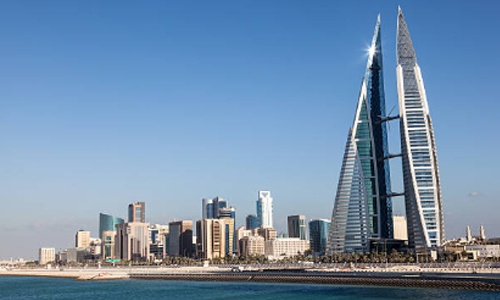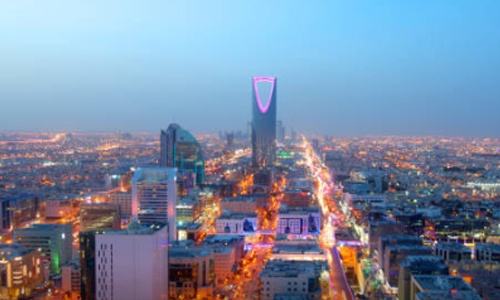
Middle East
Middle Eastern economies range from being very poor (such as Gaza and Yemen) to extremely wealthy nations (such as Qatar, UAE and Saudi Arabia). Overall, according to the CIA World Factbook, all nations in the Middle East are maintaining a positive rate of growth. According to the World Bank’s World Development Indicators database, the three largest Middle Eastern economies are Turkey ($ 794,228,000,000), Saudi Arabia ($ 467,601,000,000) and Iran ($ 385,143,000,000) in terms of Nominal GDP. In regards to nominal GDP per capita, the highest ranking countries are Qatar ($93,204), the UAE ($55,028), Kuwait ($45,920) and Cyprus ($32,745). Turkey ($ 1,028,897,000,000), Iran ($ 839,438,000,000) and Saudi Arabia ($ 589,531,000,000) have the largest economies in terms of GDP-PPP. When it comes to per capita (PPP)-based income, the highest-ranking countries are Qatar ($86,008), Kuwait ($39,915), the UAE ($38,894), Bahrain ($34,662) and Cyprus ($29,853).

Abu Dhabi, UAE
The UAE’s large hydrocarbon wealth gives it one of the highest GDP per capita in the world and Abu Dhabi owns the majority of these resources, 95% of the oil and 6% of gas. Abu Dhabi thus holds 9% of the world’s proven oil reserves (98.2bn barrels) and almost 5% of the world’s natural gas (5.8 trillion cu metres). Oil production in the UAE is in the region of 2.3m barrels per day (bpd), and projects are in progress to boost production to 3m bpd. In recent years the focus has turned to gas as increasing domestic consumption for power, desalination and re-injection of gas into oil fields increases demand. Recently the government has been diversifying their economic plans. Served by high oil prices, the country’s non-oil and gas GDP has outstripped that attributable to the energy sector. Remarkably, non-oil and gas GDP now constitutes 64% of the UAE’s total GDP. This trend is reflected in Abu Dhabi with substantial new investment in industry, real estate, tourism and retail.

Bahrain
According to a report by the United Nations Economic and Social Commission for Western Asia, Bahrain has the fastest growing economy in the Arab world. Bahrain also has the freest economy in the Middle East and is twelfth freest overall in the world based on the Index of Economic Freedom published by the Heritage Foundation/Wall Street Journal. Bahrain was named the world’s fastest growing financial center by the City of London’s Global Financial Centres Index. Bahrain’s banking and financial services sector, particularly Islamic banking, have benefited from the regional boom driven by demand for oil. Petroleum production and processing account is Bahrain’s most exported product, accounting for 60% of export receipts, 70% of government revenues, and 11% of GDP. Aluminium production is the second most exported product, followed by finance and construction materials. With its highly developed communication and transport facilities, Bahrain is home to a number of multinational firms and construction proceeds on several major industrial projects. A large share of exports consist of petroleum products made from imported crude oil, which account for 51% of the country’s imports. Bahrain depends heavily on food imports to feed its growing population; it relies heavily on meat imports from Australia and also imports 75% of its total fruit consumption needs. Since only 2.9% of the country’s land is arable, agriculture contributes to 0.5% of Bahrain’s GDP. Bahrain signed the US-Bahrain Free Trade Agreement, which will reduce certain trade barriers between the two nations.

Dubai, UAE
Dubai’s gross domestic product is US $83.4 billion. Although Dubai’s economy was built on the back of the oil industry, revenues from oil and natural gas currently account for less than 7% of the emirate’s revenues. It is estimated that Dubai produces 50,000 to 70,000 barrels (11,000 m3) of oil a day and substantial quantities of gas from offshore fields. The emirate’s share in UAE’s gas revenues is about 2%. Dubai’s oil reserves have diminished significantly and are expected to be exhausted in 20 years. Real estate and construction (22.6%), trade (16%), entrepôt (15%) and financial services (11%) are the largest contributors to Dubai’s economy. Dubai’s top exporting destinations include India (US$ 5.8 billion), Switzerland (US$ 2.37 billion) and Saudi Arabia (US$ 0.57 billion). The emirate’s top import sources are India (US$ 12.55 billion), China (US$ 11.52 billion) and the United States (US$ 7.57 billion). India is Dubai’s largest trade partner.

Kuwait
Kuwait has a GDP (PPP) of US$167.9 billion and a per capita income of US$81,800, making it the 5th richest country in the world, per capita. Estimated exports stand at US$94.47 billion and imports are around US$22.41 billion. Petroleum, petrochemical products, fertilizers and financial services are major export commodities. Kuwait imports a wide range of products ranging from food products and textiles to machinery. Kuwait’s most important trading partners are Japan, United States, India, South Korea, Singapore, China, the European Union, and Saudi Arabia. Japan is the largest customer of Kuwaiti oil followed by India, Singapore and South Korea. Kuwait city is ranked as one among the 25 largest GDP cities in the world along with New York, Tokyo, Moscow, Chennai and other financial hubs including Singapore and Dubai. According to the Index of Economic Freedom, Kuwait has the second-most free economy in the Middle East. Kuwait’s foreign exchange reserves stand at US$213 billion. The Kuwait Stock Exchange, which has about 200 firms listed, is the second-largest stock exchange in the Arab world with a total market capitalization of US$235 billion. The Kuwaiti government posted a budget surplus of US$43 billion. Non-petroleum industries include shipping, construction, cement, water desalination, construction materials and financial services. Kuwait has a well developed banking system.

Riyadh, Saudi Arabia
Saudi Arabia has an oil-based economy with h2 government controls over major economic activities. It possesses about 20% of the world’s proven petroleum reserves, ranks as the largest exporter of petroleum, and plays a leading role in OPEC. The petroleum sector accounts for roughly 80% of budget revenues, 45% of GDP, and 90% of export earnings. Saudi Arabia is encouraging the growth of the private sector in order to diversify its economy and to employ more Saudi nationals. Diversification efforts are focusing on power generation, telecommunications, natural gas exploration, and petrochemical sectors. As part of its effort to attract foreign investment, Saudi Arabia acceded to the WTO after many years of negotiations. The government has begun establishing six “economic cities” in different regions of the country to promote foreign investment and plans to spend $373 billion on social development and infrastructure projects to advance Saudi Arabia’s economic development.





